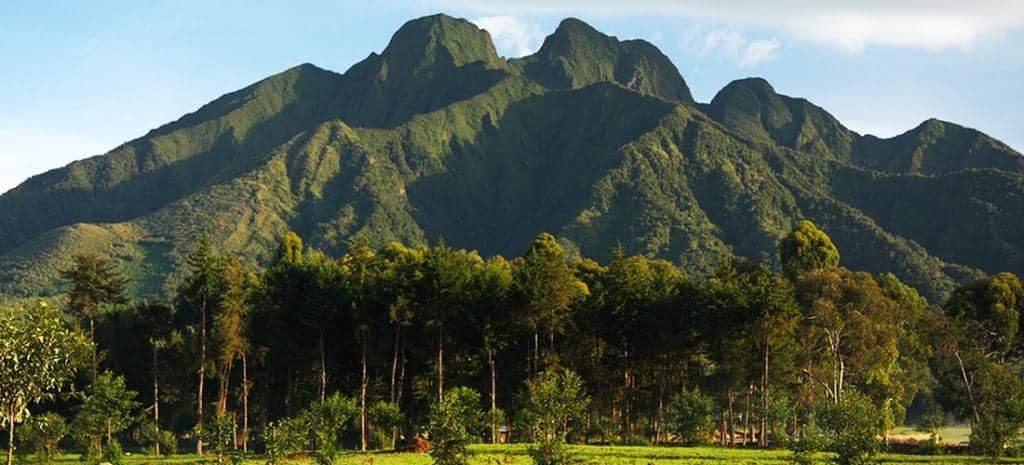Volcanoes National Park

About Volcanoes National Park
Volcanoes National Park was established in 1916 to preserve the spectacular volcanic landscapes and the surrounding ecosystems. It's a place where visitors can witness the continuous shaping of the land through active volcanic eruptions. The park also holds cultural significance for Native Hawaiians, with the volcanoes being seen as sacred by many.
The park is not just about fiery eruptions; it’s also home to lush rainforests, desert-like lava fields, and rare wildlife that thrive in this dynamic environment.
2. The Majestic K?lauea Volcano
K?lauea is the most active volcano on Earth, and one of the park's main attractions. Visitors can witness lava flows, steam vents, and craters that are constantly changing. While eruptions have varied over the years, the volcano remains a major point of interest for scientists and tourists alike.
Must-See Spots at K?lauea:
- Halema'uma'u Crater: Once a deep pit, this crater has evolved over the years, offering breathtaking views of lava lakes and volcanic activity.
- K?lauea Iki Trail: This hiking trail takes you across the floor of a crater that once had a massive lava lake. The terrain here is rugged, offering a truly surreal experience.
- Steam Vents: You can get up close to these natural phenomena where steam rises from the ground, creating an eerie and fascinating atmosphere.
3. The Magnificent Mauna Loa
Mauna Loa, the world’s largest volcano, is another geological marvel found within the park. While it's not as frequently active as K?lauea, its massive size and occasional eruptions make it a fascinating site for visitors. Hiking to the summit of Mauna Loa offers panoramic views of the surrounding landscape, including the Pacific Ocean and neighboring volcanoes.
4. Lava Tubes and Caves
A hidden gem in the park is the network of lava tubes, which are formed when flowing lava creates channels that eventually harden and hollow out. Some of these tubes are large enough to explore, offering a thrilling underground adventure.
- Thurston Lava Tube (N?huku): This easily accessible lava tube is a popular spot where visitors can walk through the tube, marveling at the smooth, shiny walls that were once filled with flowing molten rock.
5. Ecological Diversity
Despite the seemingly harsh conditions, Volcanoes National Park boasts an incredible range of ecosystems. The varying altitudes and moisture levels allow for diverse habitats, from tropical rainforests to high-altitude deserts.
Key Ecosystems:
- Rainforests: The lower elevations of the park are home to lush rainforests, filled with endemic plants and birds.
- Subalpine and Alpine Zones: As you climb higher, the vegetation changes to dry scrubland and barren lava fields. The contrast between these ecosystems is remarkable.
6. Wildlife in the Park
Volcanoes National Park is home to a range of unique wildlife, many of which are endemic to Hawaii. Some animals, like the Hawaiian Honeycreeper and the Hawaiian Monk Seal, are found nowhere else on Earth. Birdwatchers will find the park particularly exciting, with many species that are both rare and endangered.
7. Cultural Significance
For Native Hawaiians, the volcanoes hold deep spiritual significance. The goddess Pele, believed to reside in the summit of K?lauea, is said to control the fires of creation and destruction. Local legends and myths surrounding Pele are integral to the history and culture of the Hawaiian people, making the park not only a geological wonder but also a place of deep cultural reverence.
Visitors are encouraged to respect the land and its cultural heritage, including refraining from taking rocks or lava from the park.
8. Things to Do in Volcanoes National Park
- Hiking: There are numerous trails for all levels of experience, from easy walks to challenging hikes. The Devastation Trail is an easy walk that takes you through areas of the park that were impacted by volcanic activity.
- Volcano Tours: Guided tours are available, offering insights into the history, geology, and ongoing volcanic activity.
- Ranger Programs: The park offers a variety of ranger-led programs, including volcano talks, walks, and stargazing activities.
9. Plan Your Visit
Best Time to Visit: The park is open year-round, but the best time to visit is during the dry season, which runs from April to October. However, the park can be visited any time, as the volcanic activity is ongoing and constantly changing the landscape.
What to Bring: Be sure to bring sturdy hiking shoes, sunscreen, a hat, and plenty of water. The weather can vary dramatically, so it's a good idea to dress in layers.
Entry Fees: There is an entrance fee to the park, but it’s well worth the price for the once-in-a-lifetime experience of witnessing the world’s most active volcanoes.
Featured Experiences
Coming Soon: Add top safari destinations, cultural spots, and nature reserves here.